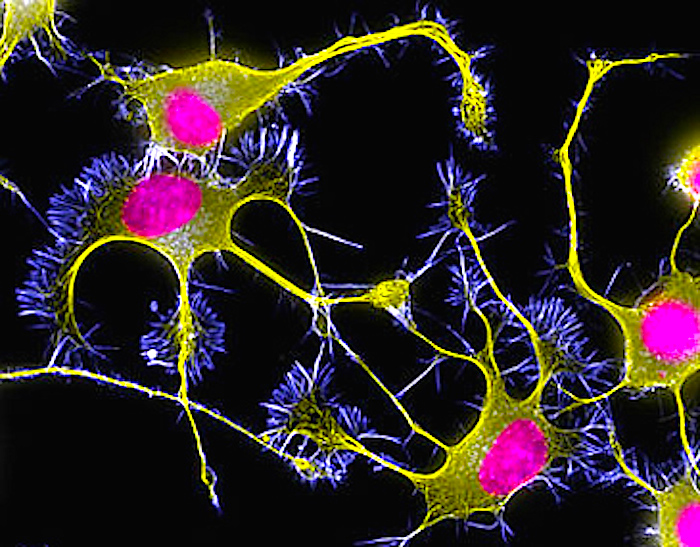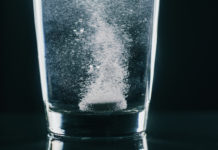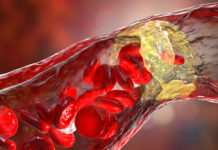Scientists at the University of Warwick have discovered that ‘good’ cholesterol is turned ‘bad’ by a sugar-derived substance. The highly cytotoxic, substance, methylglyoxal – MG, was found to damage ‘good’ HDL cholesterol, which removes excess levels of bad cholesterol from the body.
Image: Effect of Methylglyoxal on Intracellular Ca(2+) Signaling and Neurite Outgrowth in Mouse Sensory Neurons
Low levels of HDL (High Density Lipoprotein) are closely linked to heart disease, with increased levels of MG being common in the elderly and those with diabetes or kidney problems. Due to increased blood glucose levels, diabetics have higher concentrations of methylglyoxal and damage by methylglyoxal to LDL through glycation causes a fourfold increase of atherogenesis in diabetics.
The researchers discovered that MG destabilises HDL and causes it to lose the properties which protect against heart disease. HDL damaged by MG is rapidly cleared from the blood, reducing its HDL content, or remains in plasma having lost its beneficial function.
Lead researcher Dr Naila Rabbani, of the Warwick Medical School, says that: “MG damage to HDL is a new and likely important cause of low and dysfunctional HDL, and could count for up to a 10% risk of heart disease”.
There are currently no drugs that can reverse low levels of HDL, but the Warwick researchers argue that by discovering how MG damages HDL has provided new potential strategies for reducing MG levels.
Commenting on the research’s implications Dr Rabbani said: “By understanding how MG damages HDL we can now focus on developing drugs that reduce the concentration of MG in the blood, but it not only be drugs that can help. We could now develop new food supplements that decrease MG by increasing the amount of a protein called glyoxalase 1, or Glo 1, which converts MG to harmless substances.
“This means that in future we have both new drugs and new foods that can help prevent and correct low HDL, all through the control of MG.”
[Ed Note: See previous research showing that fisetin, a naturally-occurring flavonoid found in strawberries, increases activity of glyoxalase 1, an enzyme that promotes removal of toxic AGE precursors such as methylglyoxal (MG) levels in diabetic mice — http://nutritionreview.org/2011/06/strawberries/]
A potentially damaging substance, MG is formed from glucose in the body. It is 40,000 times more reactive than glucose it damages arginine residue (amino acid) in HDL at functionally important site causing the particle to become unstable.
Glo1 converts MG to harmless substances and protects us. MG levels are normally kept low in the body to maintain good health but they slowly increase with ageing as Glo1 slowly becomes worn out and is only slowly replaced.
Dr Rabbani says: “We call abnormally high levels of MG ‘dicarbonyl stress’. This occurs in some diseases – particularly diabetes, kidney dialysis, heart disease and obesity. We need sufficient Glo1 to keep MG low and keep us in good health.”
Source: L Godfrey, N Yamada-Fowler, J Smith, P J Thornalley and N Rabbani, Arginine-directed glycation and decreased HDL plasma concentration and functionality, Nutrition & Diabetes (2014) 4, e134; doi:10.1038/nutd.2014.31 Published online 1 September 2014
Link: http://bit.ly/1nplYWA















